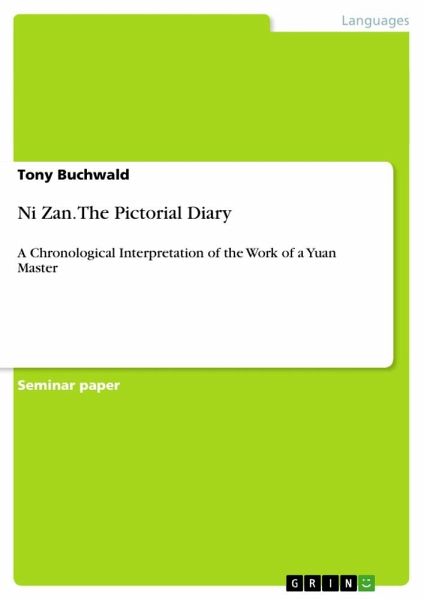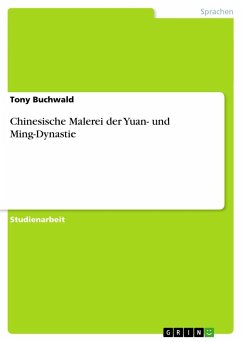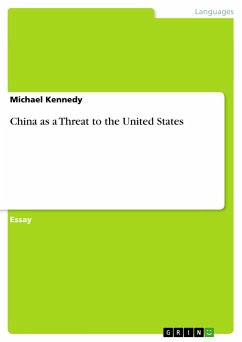
Ni Zan. The Pictorial Diary
A Chronological Interpretation of the Work of a Yuan Master

PAYBACK Punkte
0 °P sammeln!
Seminar paper from the year 2011 in the subject Orientalism / Sinology - Chinese / China, grade: 1,3, University of Heidelberg (Institute for East Asian Art History), course: Arts of the Yuan Dynasty, language: English, abstract: Ni Zan is one of the most famous figures in the history of Chinese painting and together with the other three of the "Four Great Masters of the Late Yuan" - Huang Gongwang, Wang Meng and Wu Zhen - formed the favored model for later landscapists. His influence on and appreciation in later times as well as his position among his contemporaries have been discussed on var...
Seminar paper from the year 2011 in the subject Orientalism / Sinology - Chinese / China, grade: 1,3, University of Heidelberg (Institute for East Asian Art History), course: Arts of the Yuan Dynasty, language: English, abstract: Ni Zan is one of the most famous figures in the history of Chinese painting and together with the other three of the "Four Great Masters of the Late Yuan" - Huang Gongwang, Wang Meng and Wu Zhen - formed the favored model for later landscapists. His influence on and appreciation in later times as well as his position among his contemporaries have been discussed on various occasions and should not be my main topic. My focus is on Ni Zan himself. Following the fall of the Song Dynasty to the Mongols under Kublai Khan in 1271, the Yuan Dynasty was established. That year marked the beginning of a period of turmoil and suppression all over China, but especially for the Chinese intelligentsia and the Yuan dynasty, although comparatively short, caused massive changes in cultural creativity, bringing forth painting styles that would persist and be quoted in the art scene of all later centuries. Taking a look at Ni Zan's paintings one cannot but notice certain elements that keep on appearing throughout all of his oevre. Once he settled on a certain compositional type he kept repeating it. At closer inspection one can see his painting style slightly changing, although keeping to some fixed elements. This change in Ni's work is subtle, but noticeable and also readable. The readability of his landscapes is the basis for this paper and will become clearer when going through Ni Zan's life, along with the events surrounding his time and simultaneously reading his paintings as the Chinese term du hua (to read painting) suggests. That way I will show how Ni Zan's paintings can be seen as a journal and thereby now provide us with room for interpretation and insight into his life. I should note that the main inspiration for this paper came from Maxwell K. Hearn, a curator at the Metropolitan Museum of Art, and I therefore quote the term he used for this phenomenon by titling this paper The Pictorial Diary.













